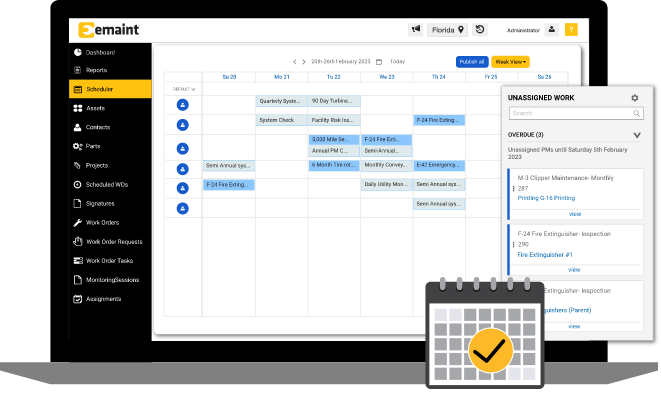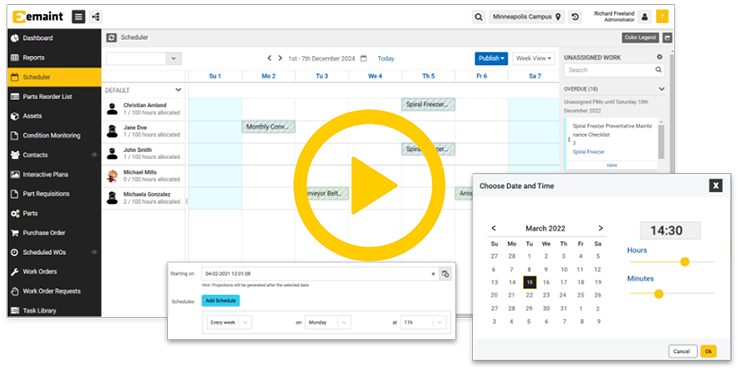Based on 268+ reviews

150,000+
USERS
116
COUNTRIES
7,400+
MAINTENANCE TEAMS HELPED
3.4 Million
MACHINES FIXED
eMaint CMMS equips you with an interactive preventive maintenance scheduler, complementing a wealth of tools that include work orders, asset management, and spare parts inventory.
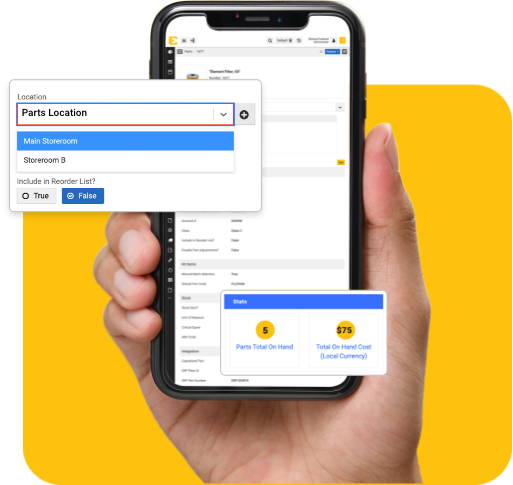
Be ready for the next unplanned downtime disaster.
Streamlined planning that saves time & cuts costs
Manage routine preventive maintenance and recurring work orders. Schedule PMs to trigger based on equipment usage. Automate work orders to trigger based on asset health data like vibration or temperature.
Simple, interactive PM calendar
Map out your work orders and PMs with the eMaint Scheduler, an intuitive, drag & drop calendar. Assign work quickly. Customize and filter your view to see only the work that matters to you.
Automatically see and resolve conflicts
Get notified of schedule conflicts as you work and resolve them right away. Receive overscheduling alerts and level-load work distribution optimize your maintenance workflow distribution.
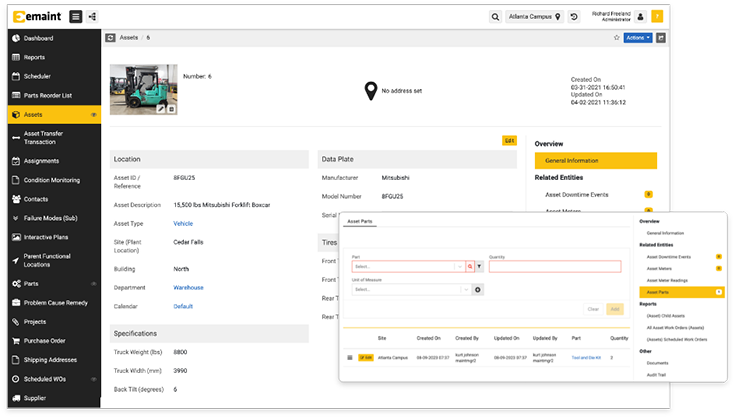
Work Orders, Evolved. Faster, Smarter, Automated.
Manage work orders and submit work requests. Customize to your heart’s content. Automate time-wasting tasks to save time.
Say goodbye to sticky note chaos and endless downtime emergencies.
Quick & flexible work order system
Organize, create, assign, and track work orders and work requests. Get in and get out with eMaint’s search functionality. Make your workspace your own – rename labels, drag and drop columns, and prioritize work orders as you see fit.
Work orders, your way
Create multi-asset work orders configured to each job. Quickly fire off route-based inspection work orders. Design work order templates with built-in procedures to standardize your maintenance strategy across the enterprise.
Automate work orders, maximize uptime
Automatically move work orders through approval levels with intuitive workflows. Get safety, quality, sanitation, and purchasing involved. Automate work orders to trigger when asset condition data indicates a failure is coming—preventing downtime disasters.
Preventive Maintenance in the Palm of Your Hand
The eMaint mobile CMMS app connects your teams, whether they’re sending off a work request on the factory floor or completing a work order at an offline worksite.
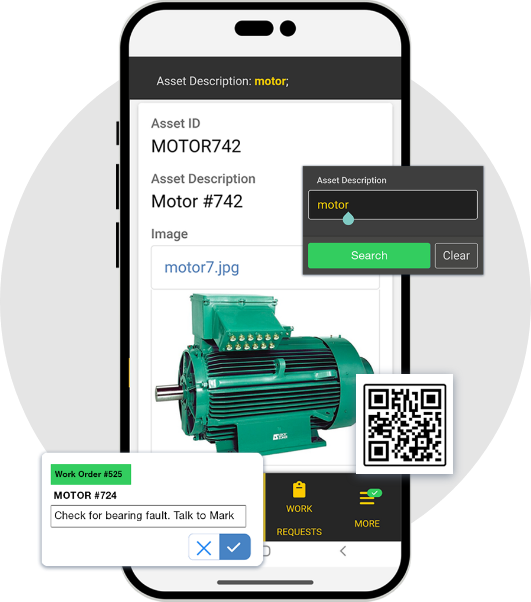
Track your work in a few taps — and ensure your team never goes dark in the field
Mobile makes life easy
Take care of work orders, approve work requests, and book parts in the field. Snap a photo, check off routine inspection tasks, and access key documents. Track your work hours and require digital signatures for work order completion.
Asset details are a few taps away
Find assets quickly, attach to work orders, and view work history. Scan barcodes in the field for instant asset data. Knock out many birds with one stone: you can see nearby open work orders when you’re already in the field for one of them.
Maximize efficiency in the field, even in remote, network-unfriendly worksites
Talk to your team 24/7. Receive mobile push notifications for work order updates. Anyone can scan QR codes to submit work requests. Work offline in remote or network-unfriendly areas: your changes will sync automatically once a connection is re-established.
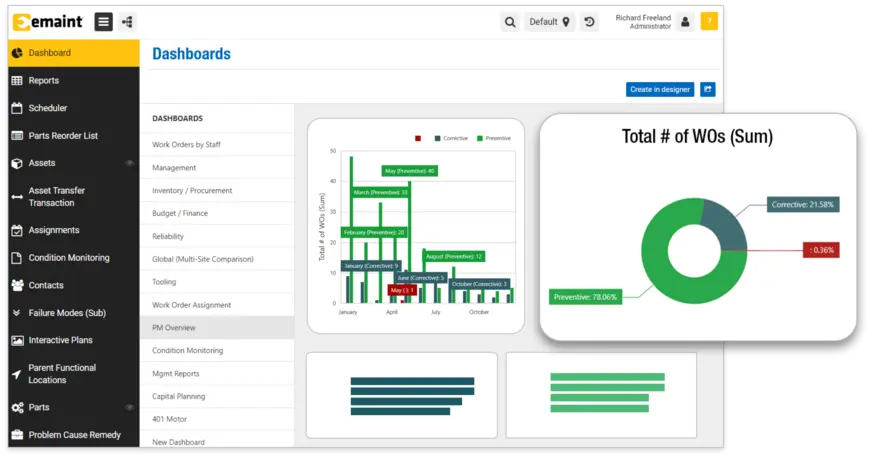
Simple, Intuitive Work Order Reports & Dashboards
Work order reporting and analytics are a breeze with eMaint. Manage work, track KPIs, and prepare for audits with ease.
You’re busy. eMaint helps you quickly discover powerful, revenue-driving insights.
PM optimization powered by a wealth of data
eMaint empowers maintenance planners on the quest for preventive maintenance optimization. Quickly see PM history. Discover wasted time, labor, and money with personalized dashboards. eMaint is a call way to help you perform an asset criticality analysis to evaluate your maintenance tasks – and how you can optimize your PMs.
Easily track maintenance KPIs like PM completion
Review work order history, PM completion, and overdue work. Establish and track maintenance KPIs for metrics like uptime, MTTR, and OEE. Find savings by analyzing wrench time, labor costs, and parts charges.
Gain an eagle-eye view of maintenance work
Easily build dashboards that give you quick insight into your team’s daily work. See work order status and completion rate at a glance. Look at your maintenance schedule on a daily, weekly, or monthly view. Discover trends and action on them to strengthen reliability.

